Request a video call
Confirm Your Virtual Consultation
IREGA Acapulco Profile Overview
WELCOME TO IREGA ACAPULCO!
IREGA IVF Acapulco- Leading Fertility Clinic and Gynecology Treatment Center in Mexico
Institute of Reproduction and Gynecology of Acapulco or IREGA Acapulco is specialized in women care that provides infertility treatment and reproductive health solution. Their major aim is to prevent diseases such as cervical, breast and gynecological cancer along with pregnancy control by monitoring the process ensuring the birth of a healthy child. They help people to form families through treatments such as IVF, Artificial Insemination and more. The methodical work of specialized groups helps several people to bring happiness to their families.
Over the past 20 years, they have made thousands of women happy. They provide guarantee to pregnancy and IVF cycle warranty. Their optimized program saves cost and ensures high performance of getting what you desire. In addition, they also offer nutritional support during the treatment and psychological therapy for emotional support. Most importantly, they combine their extensive experience with the latest technology to provide treatments, which are mentioned below.
Treatments and Procedures
- Conjugal Artificial Insemination
- Artificial Insemination by donor
- IVF with own eggs and sperm from the coupl
- PGD: Preimplatation genetic diagnosis
- ICSI: In Vitro Fertilization with intracytoplasmic sperm
- IMSI: Intracytoplasmic injection with sperms morphologically selected
- Assisted Hatching
- Egg Donation
- Testicular Biopsy
- Sex selection
- Fertility preservation
- Sperm bank
For more details about the treatments and procedures offered at IREGA IVF Acapulco, Click the button below:
IREGA Acapulco, Acapulco, Mexico Profile Details
About IREGA IVF Acapulco Clinic
IREGA, is a specialized unit created to achieve one of the most important dreams in life ... being a mother!.
The high success rates of the treatments they provide are the result of the methods used by their expertise and the continuous improvement of processes. The benefit to you with IREGA is that they have the latest advances in the field of Assisted Reproduction and Genetics with the most attentive and professional treatment.
No waiting lists and the ability to immediately obtain a pre-diagnosis and personalized pricing, they offer the latest technology and fully trained staff ready to help and assist you at all times. The center has quickly positioned itself as a center of high quality service, offering great value for money.
The IVF laboratory has the latest technology and quality control, which is reflected in the pregnancy rate, achieving successful cases of eggs and embryos, as well as epididymal sperm aspiration and testicular biopsy.
For more details about the IREGA IVF Acapulco, Click the button below:
IREGA Acapulco Treatments Offered
Artificial Insemination, also known as IUI, is ideal for patients who suffer a deterrent in the uterus, preventing sperm cells to pass, whether its alterations in the semens quality, or the cervical mucus or an incompatibility between male gametes and the cervical mucus itself. Nonetheless, this technique collaborates with conception if an allergy to sperm is present. The first step to boost probability of pregnancy is to take specific medicines, given by our team to stimulate ovulation. Ingesting these will happen near the beginning of your menstrual cycle, stimulating the ovaries into releasing more than one egg apt for fertilization.
It’s important to keep in mind that women, normally release only one egg a month. Surely the doctor in charge of your procedure will guide you through an ovulation test to detect the exact moment in which the egg should be inseminated. Once you find yourself in a fertile period, your partner will have to produce a semen sample to separate the seminal plasma from the sperm cells with good mobility and begin the capacitation process for the sperm cells. This way, after the recuperated sperm cells, after separation procedure, will be in prime conditions for fertilization. Finally, sperm cell transfer happens. The same measure is realized with a cannula.
In Vitro Fertilization is a method of assisted reproduction meant for infertile couples. Its purpose is to fertilize eggs outside the woman's body when they are unable to do so in their natural place. This procedure is performed in the laboratory, keeping eggs and sperm in incubators under controlled environmental conditions of temperature, humidity, oxygen concentration, carbon dioxide etc., which simulate the womb under normal conditions. The fertilized eggs are kept in incubators for optimal development and this is called embryo culture. The embryo culture requires comprehensive care and can last from 3-5 days depending on the quality of the embryos. In the 3 or 5 day of culture, the best embryos are selected according to their morphology to be transferred to the uterus of the patient.
IVF WITH EGGS AND SPERM FROM THE COUPLE
In Vitro Fertilization with eggs and sperm from the couple is a laboratory technique that fertilize the previously extracted eggs with your partner´s own sperm. This technique offers a certified probability of pregnancy up to 61%.. Once Fertilized, the eff becomes a pre-embryo and it´s inserted into the uterus for futher development. Typically, in normal menstrual cycle, only one egg develops each month. For a In Vitro Fertilization, we need to obtain more than just obe egg, so it is necessary to stimulate the ovaries hormonally to get several mature eggs at the same time.
IN WHICH CASES IS THIS RECOMMENDED
This type of In Vitro Fertilization is ideal when there is an insufficient quantity of sperm to be able carry out artificial insemination or when there is obstruction or damage in the fallopian tubes, since there is no other possibility of achieving pregnancy. This technique is also recommended after havingmade several attempts at artificial insemination without succes.
IVF STEPS
1. Ovulation induction
The ovaries are stimulated through the administration of hormones (FSH-stimulating follicle and, in some cases, LH luteostimulatory). The development of the cycle is monitored by ultrasound until it is verified that the number and size of the follicles is adequate. Then, another hormone that simulates LH is administered, which is the hormone that naturally causes ovulation, allowing the release of the egg.
2. Eggs extraction and In Vitro Fertilization
The extraction of the oocytes is done by puncture and aspiration of the follicles. It is a procedure that requires anesthesia(sedation). Once retrieved, the eggs are kept for a few hours in culture environment, and, in the meantime, the semen is prepared to isolate the motile sperm. If the technique to be used is ICSI (microinjection of one sperm into each mature egg), the eggs are denuded, which means that the cells surrounding their surface are removed, and one sperm is injected into each of them. In our center we perform ICSI in 99% of cases, and we don't do otherwise unless a different process is indicated. In the case of performing a classic In Vitro Fertilization, the sperms (between 50,000 and 100,000) are placed in the culture environment where the eggs are, and the next day, we check how many of them have been fertilized. Obviously, greater number of eggs and better quality of sperms, means greater chances of obtaining embryos. This technique has the drawback of offering lower fertilization rates, since the sperm is not introduced directly into the egg.
3. Transfer
Only on the day after the eggs extraction and the ICSI(Intracytoplasmic Sperm Injection) we will know the number of the fertilized ones. Over the next 2-3 days these fertilized eggs develop into pre-embryos ready to be transferred to the uterus. On the day of the transfer, the pre-embryos with the best development characteristics are selected. According to the law, we can transfer up to 3 pre-embryos but the most common average number is 2. The pre-embryos are inserted into a fine catheter and are channeled by the gynecologist to the end of the uterus(anesthesia is not necessary). Of the transferred pre-embryos, usually only one of them is implanted, but sometimes more than one gets there, which would lead to a multiple pregnancy.
4. Cryopreservation
The non-transferred pre-embryos are frozen using liquid nitrogen (this cryopreservation is known as vitrification) and are subsequently stored in an embryo bank appropriately identified. These pre-embryos can be used in subsequent cycles if pregnancy is not achieved on the first attempt. Obviously, the treatment to prepare the uterus for a frozen embryo transfer is much easier since the stimulation and extraction of oocytes is not necessary.
IVF WITH OWN EGGS AND DONOR SPERM
In Vitro fertilization with your own eggs and donor semen is a laboratory technique that fertilize the previously extracted eggs with the sperm of an anonymous donor. The donor sample has optimal conditions of quality and quantity, since it comes from a healthy donor. Once fertilized, the egg becomes a pre-embryo and it's transferred to the uterus for further development. This technique offers a certified probability of pregnancy up to 61%.
IN WHICH CASES IS THIS RECOMMENDED?
This type of IVF is used when you want to be a single mother, your partner is another woman or after several unsuccessful IVF attempts with the partner's semen and in which we suspect that the origin of the failures may be from the male partner. It is also used in cases of azoospermia (medical condition of a man whose semen contains no sperm) or when the semen has been used without success. Or, more rarely, when the man has a chromosomal abnormality and, for ethical reasons, it is not contemplated to undergo the preimplantation genetic diagnosis (study of the chromosomal characteristics of the embryo before being implanted in the uterus).
IVF WITH EGGS AND SPERM FROM THE COUPLE
In Vitro fertilization with donor eggs and partner's semen is a laboratory technique that involves fertilizing the eggs from a donor with your partner's sperms. Once fertilized, the egg becomes a pre-embryo and it's transferred to the previously prepared uterus for further development. Spanish legislation establishes that egg donation must be anonymous (there can be no knowledge between recipient and donor, either now or in the future) and voluntary (the marketing of eggs and embryos is prohibited by the law of Spain. Donors must have between 18 and 35 years old and receive financial compensation for the dedication and time allocated to the donation. This technique offers a certified probability of pregnancy up to 94%.
IN WHICH CASES IS THIS RECOMMENDED?
This type of IVF is recommended when you have ovarian problems and need to resort to donor eggs. It may be that your ovaries do not produce eggs or that the eggs are of inadequate quality (see causes of female sterility). This technique is also used if you have a genetic disease, a chromosomal abnormality or a disease that contraindicates ovarian stimulation.
IVF WITH DONOR EGGS AND DONOR SPERM
In Vitro fertilization with donor eggs and donor sperm is a laboratory technique that involves inseminating the eggs of a donor with the sperm of a donor, both anonymous. Once fertilized, the egg becomes a pre-embryo and it's transferred to the previously prepared uterus for further development. This technique offers a certified probability of pregnancy up to 94%..
IN WHICH CASES IS THIS RECOMMENDED?
This technique is used in the event that you have ovarian problems, either because of your age or for unknown reasons, and a donor sperm is also used because you want to be a single mother, your partner is another woman or because the male partner has azoospermia problems (absence of sperms) or other sperm abnormalities.
IVF STEPS
1. Egg Donor selection
Donors are selected based on very strict medical criteria and complementary tests are performed to rule out important pathologies that could have repercussions on the health of the newborn. One of the distinguishing factors of our donation program is trying to achieve the greatest possible similarity between the physical characteristics (phenotypes) of the donor and the recipient. It is what we call making a good "phenotypic matching". These results are reviewed by a doctor who also checks the absence of genetic diseases known so far in the personal or family history, while a psychologist evaluates the donor's mental health. Finally, the donor signs a consent, in accordance with with the Spanish law, where she agrees to donate her eggs to a couple who wants a child and will never try to know their identity.
2. Donor treatment
Donors must undergo ovarian stimulation treatment for about two weeks, which consists of the administration of subcutaneous injections of hormones and is followed up by ultrasound and blood tests, if necessary. The oocytes are retrieved by puncture.
3. Obtaining the sperm sample
The semen sample is obtained from a donor that has undergone a complete medical study (semen analysis, blood and urine tests, general examination, study of sexually transmitted diseases and psychological examination) to ensure the quality of his sperm and rule out any pathology. All donors are of legal age and sign a consent and anonymity of their donation. The semen is frozen before use and remains unused for a minimum of 6 months to guarantee the window period of certain sexually transmitted diseases.
4. Eggs extraction and In Vitro Fertilization
The extraction of the oocytes is done by puncture and aspiration of the follicles. It is a procedure that requires anesthesia(sedation). Once retrieved, the eggs are kept for a few hours in culture environment, and, in the meantime, the semen is prepared to isolate the motile sperm. If the technique to be used is ICSI (microinjection of one sperm into each mature egg), the eggs are denuded, which means that the cells surrounding their surface are removed, and one sperm is injected into each of them. In our center we perform ICSI in 99% of cases, and we don't do otherwise unless a different process is indicated. In the case of performing a classic In Vitro Fertilization, the sperms (between 50,000 and 100,000) are placed in the culture environment where the eggs are, and the next day, we check how many of them have been fertilized. Obviously, greater number of eggs and better quality of sperms, means greater chances of obtaining embryos.
5. Transfer
Only on the day after the eggs extraction and the ICSI(Intracytoplasmic Sperm Injection) we will know the number of the fertilized ones. Over the next 2-3 days these fertilized eggs develop into pre-embryos ready to be transferred to the uterus. On the day of the transfer, the pre-embryos with the best development characteristics are selected. According to the law, we can transfer up to 3 pre-embryos but the most common average number is 2. The pre-embryos are inserted into a fine catheter and are channeled by the gynecologist to the end of the uterus(anesthesia is not necessary). Of the transferred pre-embryos, usually only one of them is implanted, but sometimes more than one gets there, which would lead to a multiple pregnancy.
6. Cryopreservation
The non-transferred pre-embryos are frozen using liquid nitrogen (this cryopreservation is known as vitrification) and are subsequently stored in an embryo bank appropriately identified. These pre-embryos can be used in subsequent cycles if pregnancy is not achieved on the first attempt. Obviously, the treatment to prepare the uterus for a frozen embryo transfer is much easier since the stimulation and extraction of oocytes is not necessary.
PGD.
reimplantation genetic Diagnosis allows knowing the genetic basis of a hereditary disease, and thus preventing its transmission to offspring. In some cases the alternation is very larger and can be detected by a cytogenetic study (karyotype). Often, the genetic alteration is very small. On a PGD, the use of molecular techniques is necessary to allow the analysis of a single DNA base.
HOW IS PGD PERFORMED
The Genetic Material found in the nucleus of our cells (DNA) is studied. The tissue of choice to obtain DNA is generally, blood in order to carry out a cytogenetic study (Karyotype) or to study a specific region of DNA through different test such as Sequencing, Polymerase Chain Reaction, In Situ Hybridization with Flouresence.
WHO ARE CONDIDATES FOR PGD?
Individuals or families who are suspected of showing genetic disease. Often it tends to experience uncertainty when planning to have children.
That is why it is recommended to consult a geneticist, where the main reasons for a consultation are:
- Familiy history of hereditary disease or suspected from her. Ex Cystic Fibrosis , Fragile X Syndrome , Diabetes, etc ) ..
- Previous child with multiple congenital anomalies , mental retardation or an isolated birth defect ( NTD and cleft palate)
- Prenatal diagnosis
FERTILITY PRESERVATION
Nowadays, cryopreservation techniques for gametes (Sperms and oocytes) allow us to offer our patients the possibility to maintain and preserve their fertility. There are 2 groups of patients that find benefit in these techniques
Oncology patients
Cancer patient life expectancy rose considerably due to the timely diagnosis and established treatments. Nonetheless, these treatments cause the reproductive function to fail and deteriorate, reducing the number of growing cells, leading to a loss of fertility.
Fertility perservation
A woman fertility begins to decrease after the age of 30, acelerating after the age of 35 in relation to the quality and quantity of oocytes remaining in the ovary. Age is the best indicator of oocyte quality, therefore, between the ages of 40 and 45, very few women will be able to archieve a successful pregnancy. Currently many women want to postpone their motherhood for various personal, economic or work reasons, so cryoperservation of their eggs at and early age is the best option to keep possibility of becoming mothers when the patient is ready to have a baby.
GENDER SELECTION
There’s 2 primordial ways of selecting gender for couples that wish to choose it. The first method consists off choosing the sex through the male gametes or sperm cells, and at IREGA we put at your service these 2 techniques:
Within the method of selection gender through male gametes or sperm, there are two ways:
Gender selection through albumin gradients (Ericsson’s technique).
This is based on the fact that sperm cells Y (boy) swim faster than sperm cells X (girl). Once the semen sample is collected , it is set in the lab with a column of albumin gradients (protein). The sperm cells are separated into Y and X to enhance the probabilities of obtaining the desired gender.
MicroSort
It is a scientifically, proven preconception method that helps increase the chance of having a baby of the desired gender. MicroSort separates sperm into two groups: those that will become a girl (carriers of the -X chromosome) and those that will become a boy (carriers of the -Y chromosome). Microsort technology is based on the fact the -X chromosome is substantially larger (approximately 2.8%) than the -Y chromosome. The semen sample is processed and then stained with a flourescent dye that temporarily adheres to the sperm DNA. The stained cells are anaalyzed in a flux cytometer where they tavel through a jet which ends in a laser that make sperm cells flourescent. Sperm Carriers with -X (which adhered more dye) will shine brighter than sperm carriers with -Y, (wich adhered, less dye). Using a software that identifies the brightest sperms(carriers of -X) and the last bright ones (carries of -Y), the cytometer is able ti separate them.
Preimplantation Genetic Diagnosis (PGD)
The sex-selection process prior to an IVF implantation involvers seceral eggs. After the eggs are fertilized and become embryosm a single cell is removed from each one of them for genetic testing (PGD). After the fender of each embryo is established, and the unhealthy embruo are recognized, the embryos od the select gender are transferred and implanted into themother uterus. The success rate for embryo gender choice is extremely high, approximately up tp 99.9%. However, PGD is indificated for those patients who are at risk of transmitting genetic diseases to the progeny.In this way, PGD allows to only transfer healthy enbryos.
The success rate for the gender selection is very high, with a 99.9& chance of success. However PGD is for patients that have a high risk of transmitting genetic disorders.
TESTICULAR BIOPSY
Testicular biopsy consists of a surgical interventionm where through a single or multiple incision(in one or both testicles) removes one or more portions of testicular tissue, to study it and try to obtain spem.
This intervention is indicated in the absence of sperm, or then the quantity or quality of the sperm is insufficient to be able to try, with a certain possibility of success, an assisted reproduction technique. The objetive is to abtain live sperm to inject one into each oocyte of the couple (previusly retrieved by stimulation and ovarian puncture).
t will also be indicated in cases of obstruction of the seminal duct, which can be the result of multiple causes, both congenital and acquired. Among the congenital ones, the absence of vas deferens stands out, a pathology that is frequently associated with a disease called cystic fibrosis.Other causes of obstruction are those of infectious, traumati, or surgical origin (such as after performing a vesectomy), although on many other circusmtances it is not possible to detect the origin of the obstruction. This surfical intervention is performed under anesthesia and on an outpatient basis. It begings by small incision in the scrotum, and through it, it incise on the wall of one the testicles and a small amount of testicular pulp is extracted, which is inmmediately processed in order to verify the possible presence of sperm suitable for its reproductive use. If necessary, the biopsy can be repeated through this incision in different areas oh the same testicle. If sperm is not obtained or is unsufficient, the surgeon may decide to repeat the proceduree on the other testicle. If it is of interest to study the functional situation of the testicle or the type of lesion present in it, a part of the material obtained in the biopsy may be sent for anatomopathological styduy
Testicular biopsy to obtain sperm can be done prior to treatment with IVF or ICSI at the same day of oocyte collection. In the first case, it would be necessary to freeze the sperm thatcould be obtained, and thawed for later use. Sperm freezing associated with previous biopsy may deteriorate the quality and survival of some sperm, but allows greater assurance that the procedure is feasible as is known in advance the presence or absence of male gametes. Before the intervention we, will require blood and biomedical tests for each patient, in order to minimize the risks associated with the intervention serological testing to rule lues infection, HIV, hepatitis B and C, or other infectious diseases, will be also required
IREGA Acapulco Certificates, Accreditations, Qualifications Treatments Offered
Medical Team
IREGA IVF Acapulco is comprised of a multidisciplinary team, highly skilled in different aspects of reproductive medicine, endoscopic surgery, maternal fetal medicine, genetics, nutrition, and psychology.
Dr. Adán Oliveros Ceballos
GENERAL DIRECTOR IREGA
Clinical Interests: Evaluation of the infertile couple (male and female); controlled ovarian hyperstimulation with intrauterine insemination and perfusion; Laparoscopy and Hysteroscopy Diagnostic and surgical Reproductive Endocrinology, and Assisted Reproductive Technologies: In-Vitro Fertilization (IVF) Injection Intracytoplasmic Sperm Injection (ICSI). cesarean delivery care and gynecological pathology.
Care Center Director in Gynecology and Reproduction, in Acapulco, Guerrero, Director, Institute of Reproduction and Genetics at the Hospital Galenia Cancun Quintana Roo, Medical Specialist, Recertified in Reproductive Biology, Professor Examiner Council in biology of Human Reproduction, Recertified Specialist in Obstetrics and Gynecology, Professor Examiner specialty council of Gynecology and Obstetrics, Professor of the course of dialogues in Playing Mexican Association of Reproductive Medicine. It belongs to the College of Obstetrics and Gynecology Guerrense of Guerrero State, President of the Association of Gynecology and Obstetrics Guerrerense full member of the Mexican Association of Reproductive Medicine, the European Society of Human Reproduction and Embryology and the American Society for Reproductive.
Acknowledgments. - Multiple awards for Professor of Congress in the area of Reproductive Biology and by the Mexican Board of Obstetrics and Gynecology in October 2011. For six years the meritorious work as Teacher Board Examiner in Obstetrics and Gynecology and Reproductive Biology.
Academic interest. -
Advisor of the Journal of Reproductive Biology of the Mexican Association of Biology of Reproduction, free papers presentation.
- Professor of the course "Dialogues in Art" of AMMR.
- Head of Teaching and Research Hospital Galenia in Cancun, Quintana Roo, Mexico.
- Awards in Video Endoscopy in Congress.
Dr. Miguel Aguilar Charara
International collaborator
Biol. Emanuel Mejía Jiménez
Assisted Reproduction
Dr.Adrián Israel Ramírez Mendoza
Maternal- fetal Medicine
Lic. Ntr. Erika Zamora
Nutricionist
Lic. Psic. Casandra Díaz Cisneros
Psychologist
To know more about the team, click the button below:
IREGA Acapulco Testimonials
Hello, I am very grateful to Dr. Adan Oliveros, because he and God made my pregnancy possible, just when I had lost all hope.
Hello, Dr Adan ! Hope you are doing well. It's been a while but here we send a photo of our beloved Ian Benjamin. Already 6 months.
After trying in other clinics in Mexico, I reached IREGA and I got my pregnancy on the first try. And now I enjoy my little beloved ones that have enlightened my life. Thanks to Dr. Adan and all the IREGA team.
Because of IREGA, now I have the privilege of being a mom, thanks!
Acapulco, Mexico Destination Overview
Why Acapulco?
Acapulco is a city and major seaport in the state of Guerrero on the Pacific coast of Mexico. With plenty of hotels, beaches, and restaurants, the city is exciting for tourists who can enjoy activities like sports fishing and boat tours.
Acapulco, Mexico’s original party town, has a stunning topography of soaring cliffs curling into a series of wide bays and intimate coves, fringed with sandy beaches and backed by jungle-green hills. It was dubbed the ‘Pearl of the Pacific’ during its heyday as a playground for the rich and famous, including Frank Sinatra, Elvis Presley and Elizabeth Taylor.
Few places evoke the glamour of a bygone era quite the way Acapulco does. Fifty years ago, you could board a champagne-filled flight to this crown jewel of the Mexican Pacific coast and, in a few hours, be mingling with the Hollywood, political, and artistic elite in one of the world's most fashionable travel destinations .
The view across the bay remains one of the most spectacular cove-views anywhere in the world. When the sun sets, views from Pie de la Cuesta (see Key Attractions, below) are some of the best you’ll see anywhere on Mexico’s Pacific coast. At night, when the lights come on and the bay glitters, Acapulco’s downtown district comes to life in bars, discos and restaurants along the main avenue that runs along the beachfront.
Acapulco is a big resort —you won’t see it all in just one visit— and it’s quite spread out.
For all its contrasts, and change in fashions and fortunes over the years, Acapulco still has two things going for it that few other coast resorts can lay claim to: first, everyone has heard of Acapulco—its fame is almost universal and, secondly, it still has one of the most stunning bay views offered by any coastal resort.
Acapulco is full of energy, vibrancy, and color. If it’s the beach party of your life that you’re looking to experience, then Acapulco has the capability to deliver the goods to you in style. Conversely, people arriving to enjoy Acapulco’s attractive climate, its great beaches, famed attractions and surroundings and who want a place to get away from the nightlife (either afterwards or permanently) the newer, more cultured and upscale Acapulco Diamante area, situated to the southeast of the city, is the place to go.
If you’re looking for a wild week or weekend, then stay at one of the resorts in the near the city’s center along the coast to be closer to the night life. If you’re looking for more culture, a refined resort style and relaxation then stay instead in the Acapulco Diamante area and enjoy one of its first-class resorts.
Key Attractions
Main Activities
Besides sunbathing, swimming, resting and partying, Acapulco can be host to a wealth of activities, including:
- Diving and Snorkeling
- Jet Skiing
- Power-boating
- Fishing
- River Rafting on Rio Papagayo
- Golf
Getting There & Around
By Air – From Mexico, you can fly to Acapulco from Mexico City or Guadalajara. You can also connect to Acapulco from various cities in the USA. The airport is 20 minutes south-east of Acapulco’s central area. Ground transportation options, including taxis, car rentals and shuttles, are available from the airport. Local colectivos will also take you into town for an affordable price. For detailed information about flights and flying, see the Mexperience guide to Air Travel in Mexico.
By Bus – Buses run all day from Mexico City’s Central de Autobuses del Sur to Acapulco’s main bus station. The journey distance is about 180 miles and will take about five hours. There are two bus terminals in Acapulco; Estrella de Oro (the company which runs the very comfortable “Diamante” (Diamond) service to and from Mexico City) has a separate terminal a few blocks from the main station. You can book your tickets online in advance with Estrella de Oro. For detailed information about bus transportation read the Mexperience guide to Bus Travel in Mexico.
By Car – The drive to Acapulco on the toll road from Mexico City is fast and efficient, taking about four hours. The Toll Road is Highway 95 – the same one the first-class bus takes; a very scenic route that includes driving across the suspension bridge over the Río Balsas, the largest of four suspension bridges on the highway. There is a free road you can take as an alternative to the toll highway, but this will inevitably be slower, and we recommend you take the toll road for efficiency and safety. See additional information about Driving in Mexico and Mexico’s Toll Roads on Mexperience.
Car Rental – To explore Mexico’s provincial towns and cities — including its beach locations and the scenery and attractions nearby them — consider renting a car for your visit. Having your own car will give you more flexibility than using public transport options and, in some cases, offer you access to places which are otherwise difficult to visit without the use of a car. Read our guide to Car Rental in Mexico to learn what you need to know about car rental in Mexico and connect to the Mexperience Travel Center to reserve your Rental Car.
Local Buses – These are frequent and plentiful, but do tend to be a bit rickety. They are a very economical means of getting around locally and will take you anywhere you want to go in the Acapulco bay area.
Taxis – Taxis in most of Mexico’s beachside towns and cities are not metered, so agree your price before you get in. Taxi travel is very affordable in Mexico, in comparison to the USA, Canada and Europe, and so provides a viable means of public transportation in Mexico. Your hotel can arrange taxis for you; some post their rates on a board in the lobby; taxi hotel rates are usually higher than cabs you hail off the street. If you speak Spanish, you will have a distinct advantage and be able to negotiate a price with the driver. For detailed information, read the Mexperience guide to Taxi Travel in Mexico.
Local Climate
Acapulco’s climate is hot and very humid – perfect for the seaside. Average temperatures hover around 80F, with high humidity levels all year round. The town boasts sunshine nearly every day of the year. The rainy season here is between June and October, although downpours tend to be reasonably brief and occur in the late afternoon / early evening.
For more details about the IREGA IVF Acapulco, Click the button below:
Location
Reviews

About Medical Center
- Speciality: Fertility Treatment, Gynecology Treatment
- Location: Cerrada de Cumbres #104 Fracc. Farallon, C.P. 39 690, Acapulco, Mexico
- Packages: Tubal Ligation Reversal Package in Acapulco, Mexico by IREGA IVF Acapulco ,
- Medically reviewed by: DR. ADAN OLIVEROS CEBALLOS
- Associated Doctors: DR. ADAN OLIVEROS CEBALLOS
- Medical Center Videos: IREGA Acapulco
- Medical Center Prices: IREGA Acapulco
- Overview: IREGA IVF Acapulco is a leading clinic in Mexico offering reproductive health and infertility treatment solutions for local and international patients. Their key treatment procedures include IVF, artificial Insemination, PGD, ICSI, Assisted Hatching, Egg Donation, Sex Selection and more.

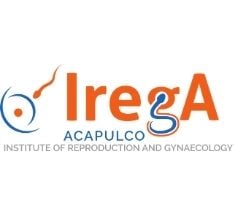
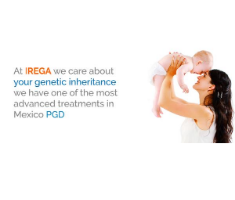

fachada.jpg)


fachada.jpg)
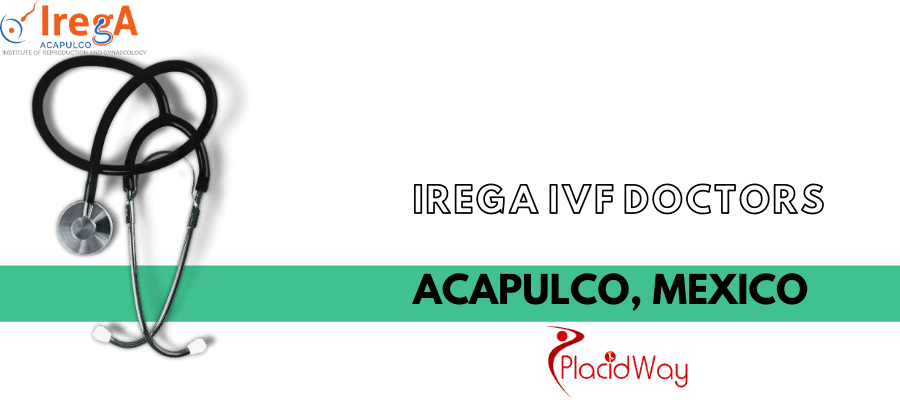


.png)
.png)



.png)


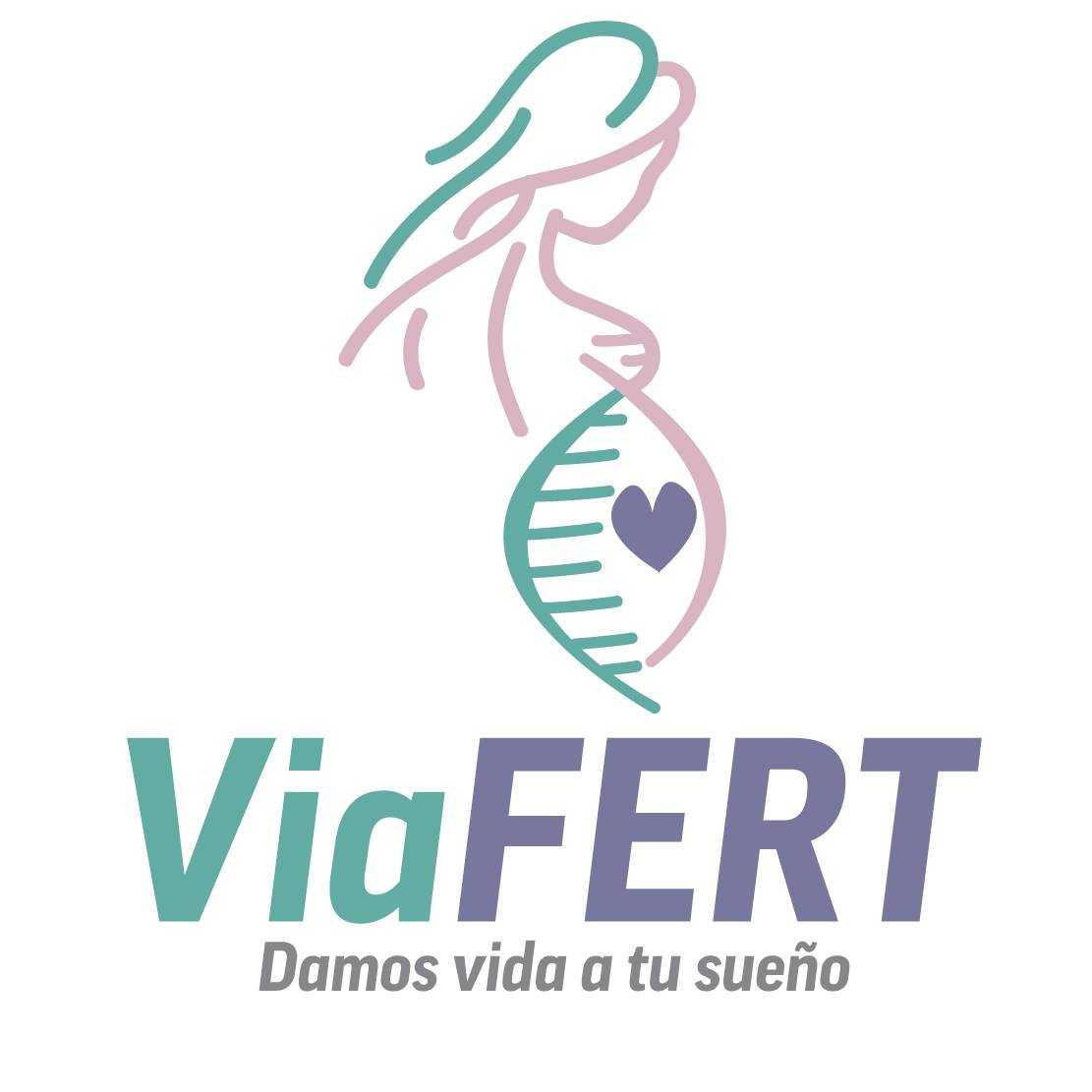
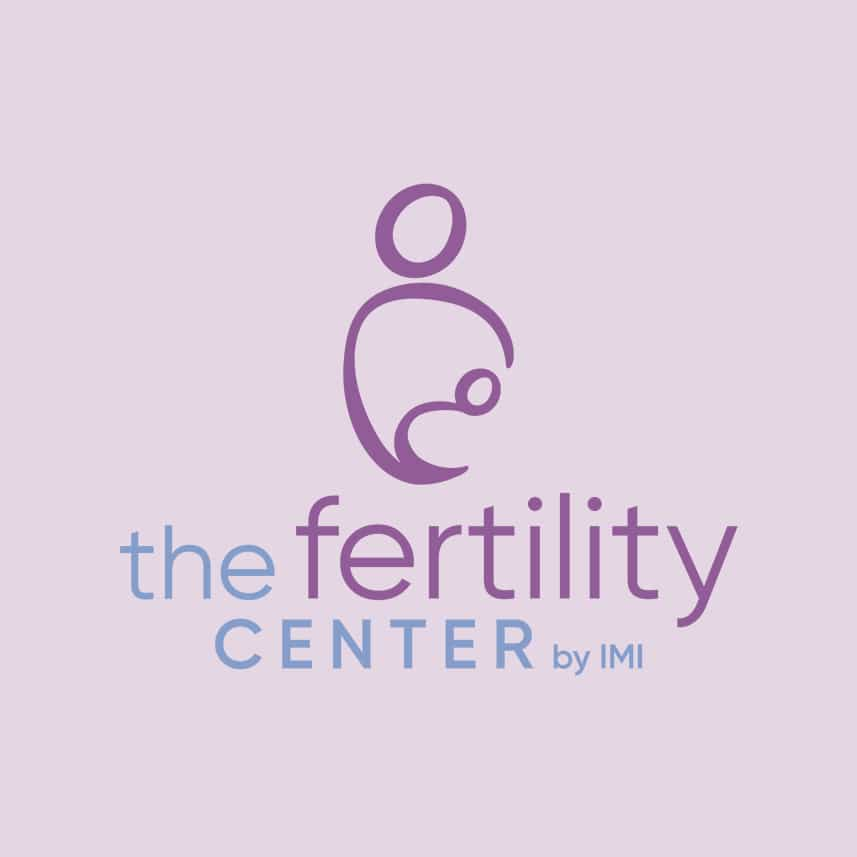
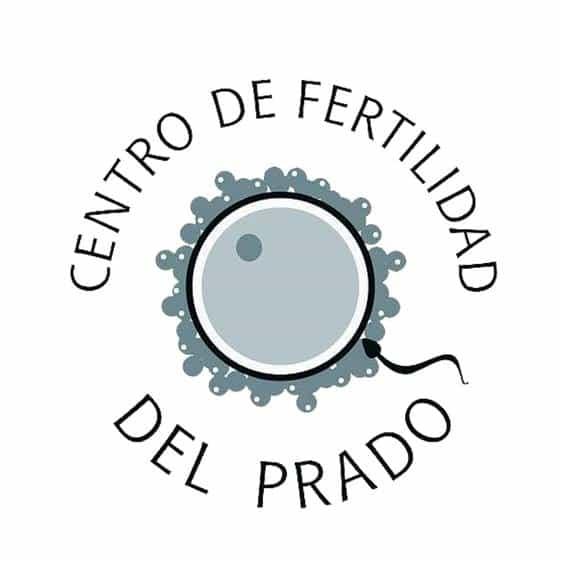
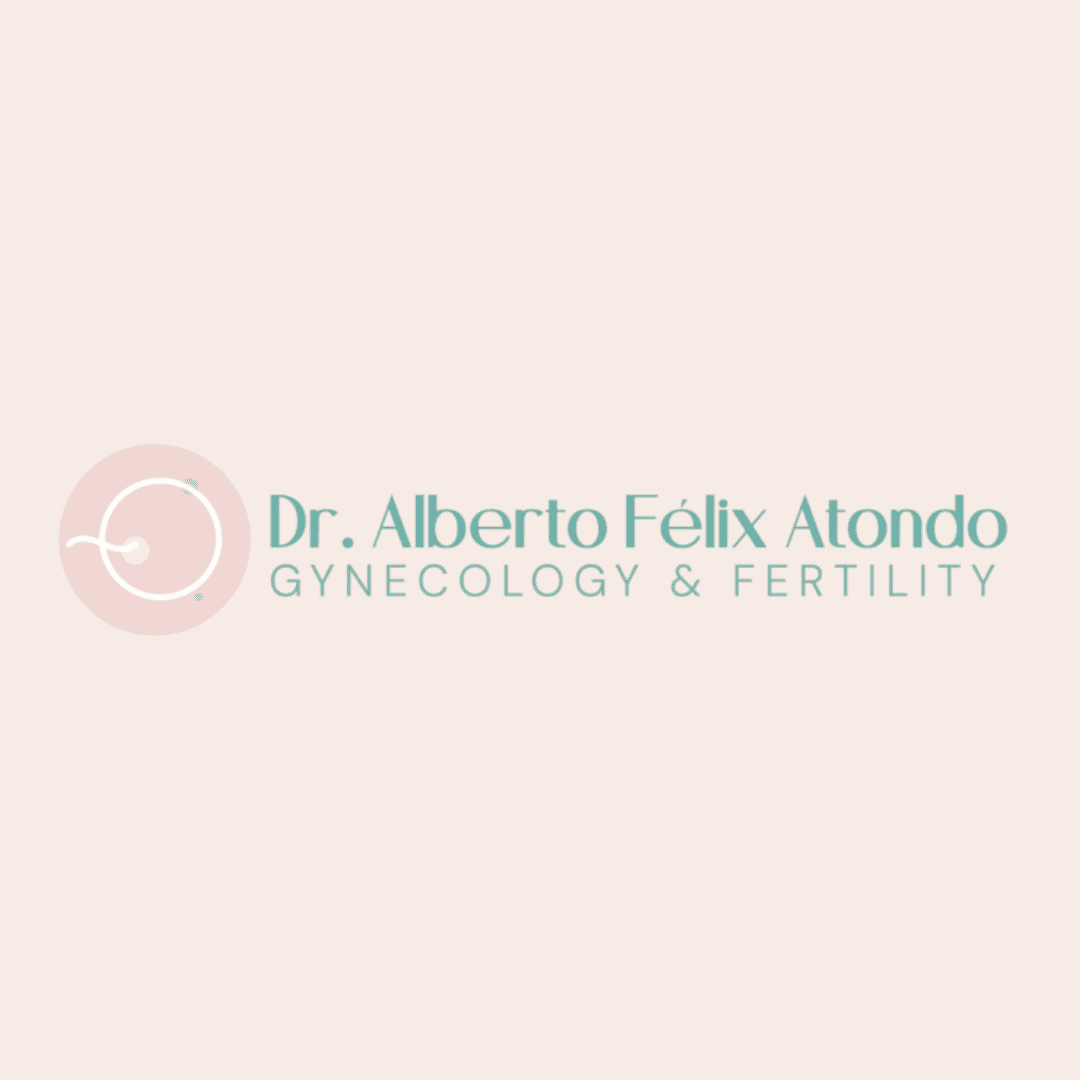
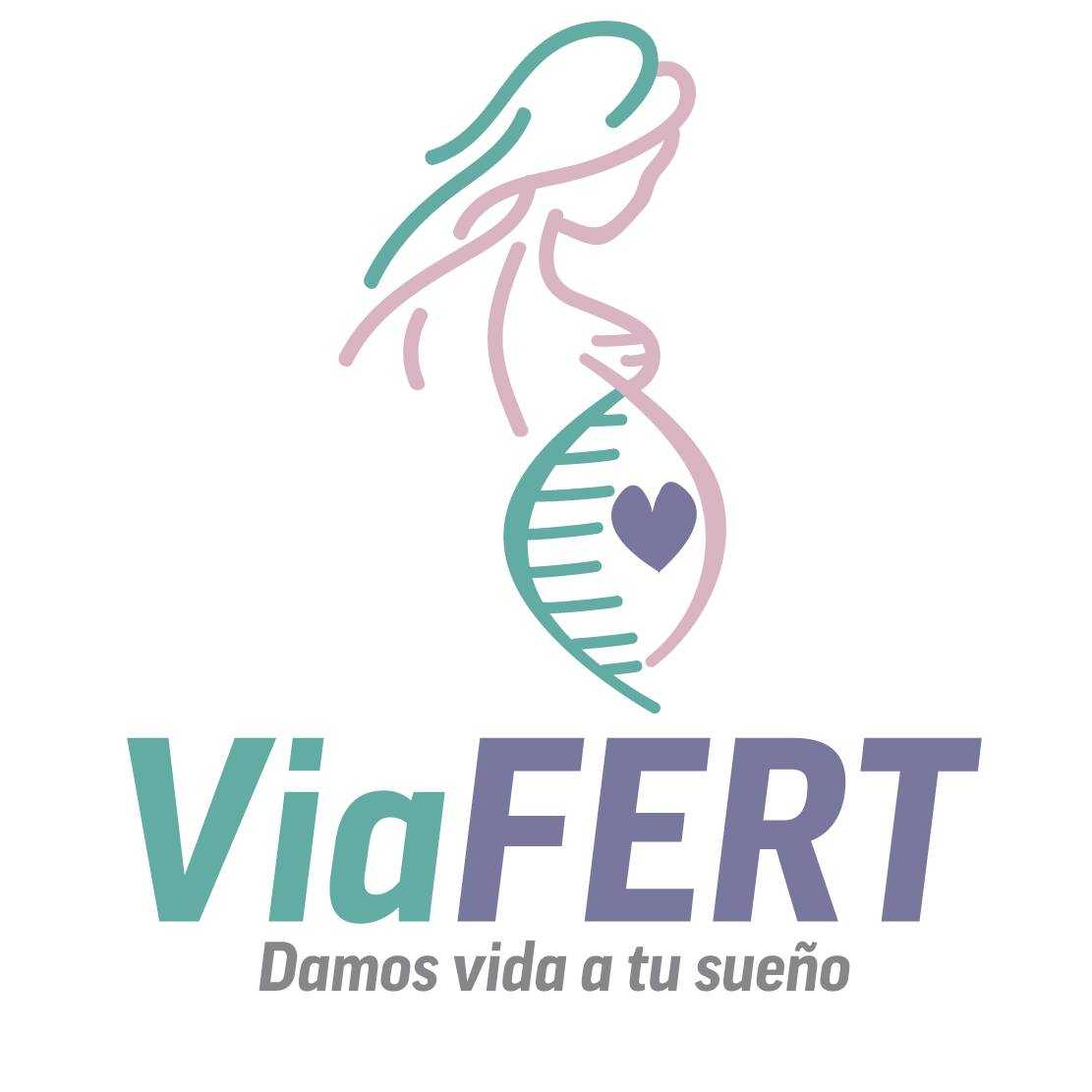

Share this listing